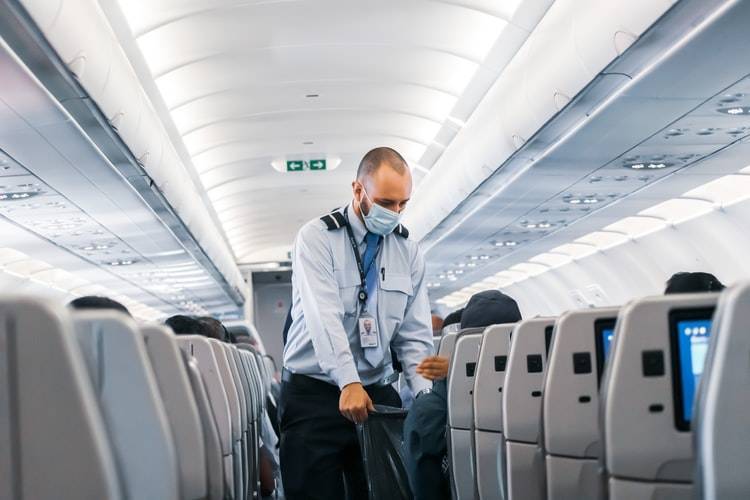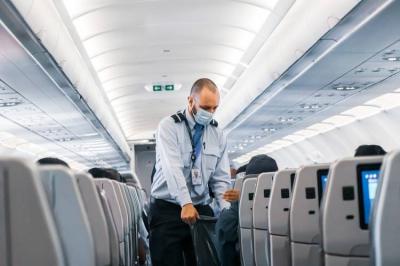Under the title "Why Won't 'Covid' Leave Middle Seats Empty on Airplanes," Bloomberg Asharq published a translated article on traveling by David Fickling, which pointed out that amidst the tragedies of the Corona pandemic, there is another reason to thank the medical profession. Doctors want you to have a comfortable space on your next flight. According to a recent study from the Centers for Disease Control and Prevention, the risk of contracting the coronavirus decreases by 57% on flights when middle seats are left empty. This confirms the validity of the decision made by most major American airlines at the beginning of the pandemic to stop selling middle seats, and this practice has since been abandoned globally. Delta Air Lines, the last airline to implement this decision, is set to fully fill its seats starting May 1.
From a financial standpoint, it is easy to understand why airlines are unhappy about this decision. As fixed costs for individual flights rise, the landing and navigation fees remain the same whether the plane carries one passenger or 300. Operational expenses are somewhat fixed as well, since crew numbers are largely determined by the number of seats on the plane, not the number of occupied ones. Fuel costs don't vary much either, as most of the airplane's weight at takeoff is comprised of the aircraft itself and fuel, not passengers and their luggage.
A low load factor means that one of the most important profitability metrics for airlines is the load factor itself, or the share of occupied seats. The more you fill the cabin, the more you can cover all fuel and operating costs for the flight, with additional sales translating into pure profit. The problem is that competition among airlines continues to drive down ticket prices, meaning you need to sell an increasingly larger share of the cabin to break even.
A simple calculation shows why the idea of not selling middle seat tickets never succeeded. By definition, the maximum load factor in this scenario would be 67%, as only two out of three seats could be sold when not selling middle seats. However, these numbers could have been applicable over a decade ago when flying was less competitive than it is today.
Looking at the breakeven load factors of major airlines reveals the average level of ticket sales they need to reach in order to cover operational costs. In the two years prior to the Corona pandemic, airlines often needed to fill nine out of ten seats to have a chance at breakeven. In fact, many load factors exceed 100% in normal times. This might seem impossible to understand until you know that most airlines earn significant amounts from things other than selling passenger tickets, such as convincing travelers to pay for sandwiches, legroom, baggage, loyalty programs, or commercial air freight.
As we noted earlier, things became worse with the Corona pandemic, and they are unlikely to improve for some time. Among 27 airlines in the sample we studied, only eight were able to achieve breakeven load factors below 100% last year. Surely, this should improve as flight traffic increases, easing airlines' capital cost burdens. However, domestic air traffic remains significantly low compared to pre-Corona levels almost everywhere, while international travel may not return to normal until mid-decade.
The availability of middle seats on many airlines throughout most of last year did not indicate how easily they could handle load factors below 67%, but rather highlighted the desperation they had reached in trying to get people to fly again. Airlines face a tough challenge in how to entice passengers back to flying amid legitimate fears of infection, especially at a time when many people have forgotten the habit of flying.
Reducing prices is a risky game, as it may lead customers to regard discounted fares as normal, at a time when the airlines need to be more profitable than ever to offset the massive debts they've accumulated. Filling planes to one-third capacity made sense for a time to demonstrate goodwill and convince passengers to fly at all, but it won’t be sustainable at all.
So to travelers on Delta Air Lines with middle seats left vacant in the next two weeks, it's advisable to take full advantage of it now. Because planes will be more crowded than ever in the foreseeable future.




